Gravity die casting machine Projects
Die casting factory project with PINO
Featured Project
Brass Water Meter Gravity die Casting Machine Project
- Turkey
Customers mainly do pipe fittings, mainly brass pipe fittings, water meters, faucets and so on. Gravity casting brass die castings have good density and high hardness. Customer bought gravity die casting machine, sand core machine. Later, a lot of gravity die casting machines were purchased.
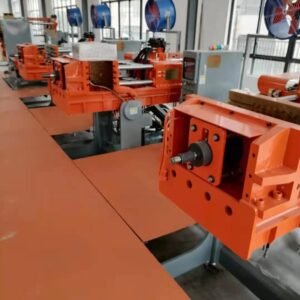
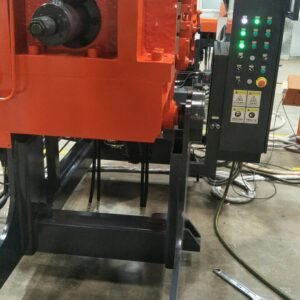
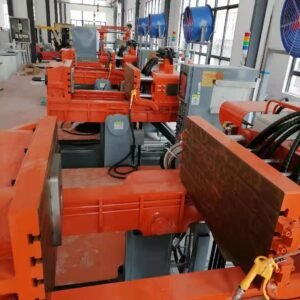
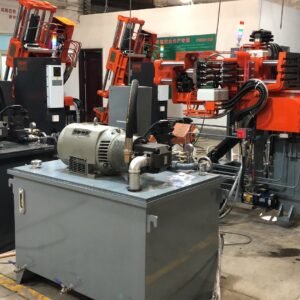
Featured Project
Bathroom industry projects
- Turkey
The customer purchased 10 gravity casting machines at one time, mainly producing bathroom products. Customers have a very high evaluation of us, because they have bought PINO gravity die casting machines a long time ago, and the evaluation is very good, so they come to us to buy again.
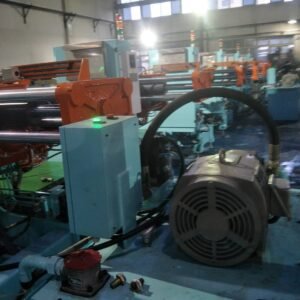
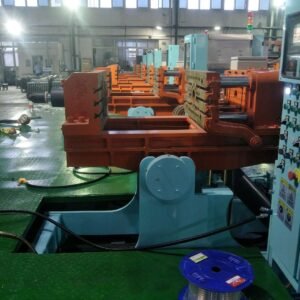
Featured Project
Automotive casting gravity die casting project
- Algeria
It is mainly used for auto parts made by gravity casting of aluminum alloy. Using PINO’s gravity casting machine to degas and remove slag when melting aluminum ingots, it can effectively reduce the occurrence of pores, sand holes in the aluminum alloy castings, and bad defects after processing. Happening.

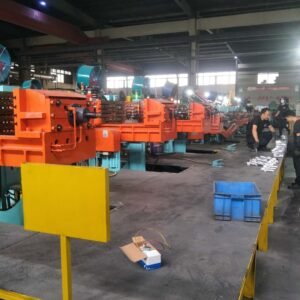
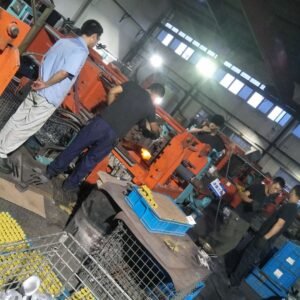
Gravity die Casting Project Introduction
Gravity casting projects can be divided into ferrous metal casting (including cast iron, cast steel) and non-ferrous metal casting (including aluminum alloy, copper alloy, zinc alloy, magnesium alloy, etc.) according to the casting material. Casting can be divided into sand casting and metal casting according to the material of the casting mold. Many of PINO’s gravity die casting machine use aluminum alloy and zinc alloy casting, and the most commonly used are brass and aluminum and related alloy materials.
Pipe fittings and valves are frequently made from copper castings. The term “brass” refers to a copper alloy with zinc serving as the primary additional ingredient. Brass has a lovely yellow hue. The term “common brass” or “simple brass” refers to the copper-zinc binary alloy. Special brass or complicated brass is defined as brass that contains more than three yuan. Less than 36% zinc brass alloys are made of solid solutions and have strong cold working characteristics. For instance, brass known as seven-three brass or bullet casing brass, which contains 30% zinc, is frequently used to create bullet casings. Brass alloys with zinc content between 36 and 42% are composed of and solid solution, of which the most commonly used is six-four brass with zinc content of 40%. Other elements, such as aluminum, nickel, manganese, tin, silicon, lead, etc., are frequently added to regular brass in order to enhance its qualities. Brass’s strength, hardness, and corrosion resistance may be increased by aluminum without reducing flexibility, making it ideal for seagoing condenser pipes and other corrosion-resistant components. Naval brass, also known as tin brass, is used for ship propellers and thermal equipment because it increases the strength of brass and increases its resistance to corrosion from seawater. Lead makes brass more machinable; this free-cutting brass is frequently used in watch components. Brass and aluminum are cast to form the fire hydrant explosion-proof crescent wrench that yellow ships frequently utilize.
For the auto parts produced by gravity casting of aluminum alloys, the degassing and slag removal process when melting aluminum ingots can effectively reduce the occurrence of pores, sand holes in the aluminum alloy castings, and defects after processing, and master a reasonable cooling time. After the aluminum alloy melt is cast into the mold cavity, it can effectively reduce various defects on the surface of the casting after cooling and shrinkage. Reasonable casting temperature control and spray treatment on the surface of the mold cavity can effectively prolong the service life of the mold. For some auto parts with complex shape and structure or complex internal cavity, adding a pair of sand core molds can Compared with low pressure casting, it has high production efficiency and stable product quality.
Gravity casting projects can be divided into ferrous metal casting (including cast iron, cast steel) and non-ferrous metal casting (including aluminum alloy, copper alloy, zinc alloy, magnesium alloy, etc.) according to the casting material. Casting can be divided into sand casting and metal casting according to the material of the casting mold. Many of PINO’s gravity die casting machines use aluminum alloy and zinc alloy casting, and the most commonly used are brass and aluminum and related alloy materials.
Pipe fittings and valves are frequently made from copper castings. The term “brass” refers to a copper alloy with zinc serving as the primary additional ingredient. Brass has a lovely yellow hue. The term “common brass” or “simple brass” refers to the copper-zinc binary alloy. Special brass or complicated brass is defined as brass that contains more than three yuan. Less than 36% zinc brass alloys are made of solid solutions and have strong cold working characteristics. For instance, brass known as seven-three brass or bullet casing brass, which contains 30% zinc, is frequently used to create bullet casings. Brass alloys with zinc content between 36 and 42% are composed of and solid solution, of which the most commonly used is six-four brass with zinc content of 40%. In order to improve the properties of ordinary brass, other elements are often added, such as aluminum, nickel, manganese, tin, silicon, lead, etc. Aluminum can improve the strength, hardness and corrosion resistance of brass, but reduce the plasticity, so it is suitable for seagoing condenser pipes and other corrosion-resistant parts. Tin can improve the strength of brass and its corrosion resistance to seawater, so it is called naval brass and is used for ship thermal equipment and propellers. Lead improves the machinability of brass; this free-cutting brass is often used in watch parts. The fire hydrant explosion-proof crescent wrench commonly used by yellow ships is cast from brass and aluminum.
For the auto parts produced by gravity casting of aluminum alloys, the degassing and slag removal process when melting aluminum ingots can effectively reduce the occurrence of pores, sand holes in the aluminum alloy castings, and defects after processing, and master a reasonable cooling time. After the aluminum alloy melt is cast into the mold cavity, it can effectively reduce various defects on the surface of the casting after cooling and shrinkage. Reasonable casting temperature control and spray treatment on the surface of the mold cavity can effectively prolong the service life of the mold. For some auto parts with complex shape and structure or complex internal cavity, adding a pair of sand core molds can Compared with low pressure casting, it has high production efficiency and stable product quality.
Learn more about solutions
Auto parts, bathroom accessories, pipe accessories all kinds of aluminum, aluminum alloy, brass and other materials die-casting.
